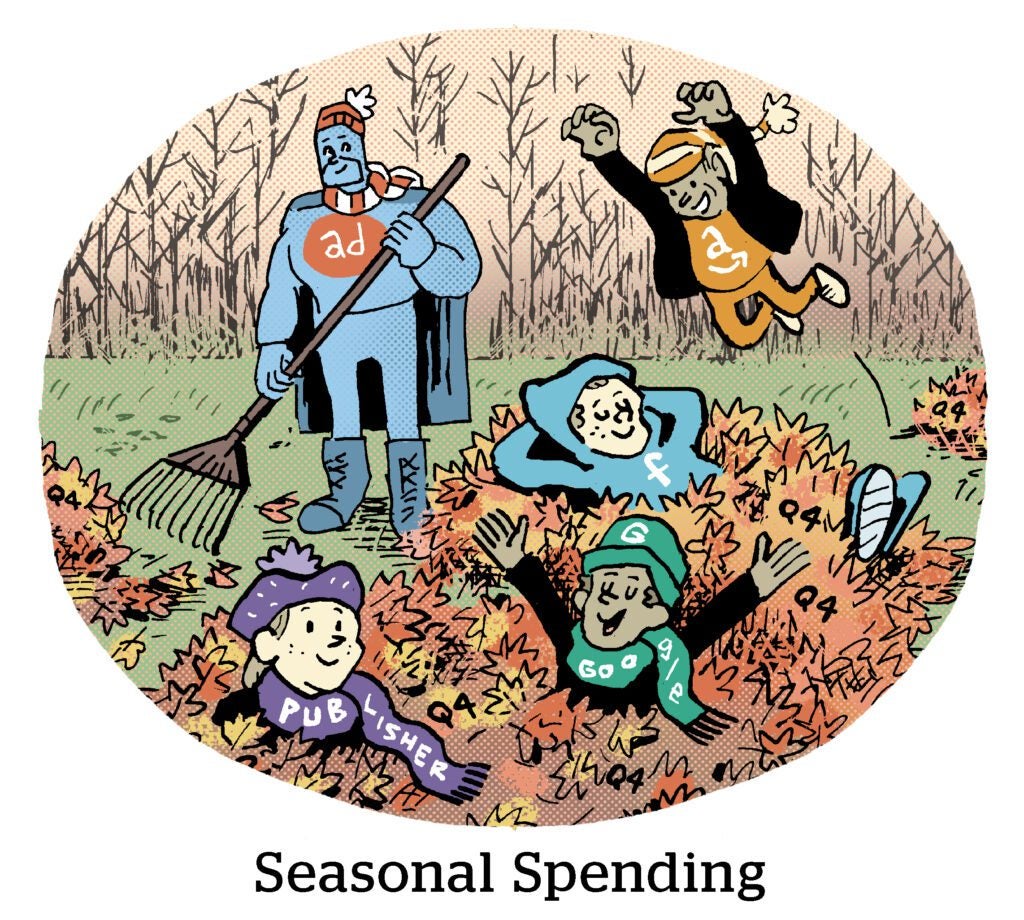(More Dead Than) Amazon Live
Amazon Live still hasn’t gained much traction with influencers or product review publishers and their valuable audiences.
Amazon was hoping that a slew of publisher-produced live video programs would drive Cyber Monday shoppers to its live content and discovery service. But many publishers were hesitant to jump in after Amazon presented its rather vague plan that included no strategic guide for cultivating or monetizing an audience or even any overall goals beyond promoting the Live service.
That’s a big problem considering the fleeting nature of live content. There’s not much use for it after the session is over. To make matters worse, Amazon “had nothing to share about how to build an audience,” an anonymous source told Digiday.
This isn’t the first time Amazon’s publisher or creator efforts were lost in translation. Earlier this year, publishers in Amazon’s OSP (Onsite Publishing Program) had their hopes raised and dashed by measurement errors. Publishers were also kept in the dark about sudden optimization tests and changes. Perhaps most egregious, publishers actually noticed that their content on Amazon, such as product guides, were demoted or replaced by Amazon’s branded reviews, fueling fears that Amazon would ditch their products once they’d outlived usefulness.
Don’t Hate, Reciprocate
The reciprocity principle is straightforward: People feel an obligation to repay a favor or charitable gesture. An art studio might offer free wine and cheese because if that makes customers even fractionally more open to the idea of buying an expensive piece, those happy hour freebies pay off handsomely.
Web designers and publishers should also live more by the reciprocity principle, according to Therese Fessenden, a senior user experience specialist with Nielsen Norman Group, a UX consulting firm. For instance, when site visitors are greeted by paywalls or login requests, the first thing users experience is a demand to access content. “People often resent this, and may not be as forthcoming or cooperative as a result,” Fessenden said.
Publishers need to flip that script, so users feel like they’re granting their data reciprocally for content or services already received.
One way is to prompt a login notification only after users browse around multiple articles or pages. That would mean fewer data collection opportunities – but result in a stronger audience of which a publisher can request data as a reciprocal favor, rather than as an upfront demand.
Don’t Hate, Affiliate
Google caught flak in November after an apparent search algorithm update reduced traffic to product review sites. But Google has published an update on that algorithm change in the form of two new best practices to help elevate product review pages and publishers that carry affiliate links.
One recommendation is to create visuals, audio or other links that document how a product was tested, rather than aggregating product descriptions or reviews. Original content serves to “support your expertise and reinforce the authenticity of your review,” according to Google.
The other best practice is to “include links to multiple sellers to give the reader the option to purchase from their merchant of choice.” Google frames this suggestion as a matter of user choice. But it’s a fly in the ointment for Amazon, which is the go-to option for affiliate links. More people have Amazon accounts than any other online retailer and its product pages have the highest conversion rates.
By forcing (or recommending … but c’mon) that publishers offer multiple purchase links, the likely scenario is Amazon goes from owning ecommerce traffic on a page to competing for it.
But Wait, There’s More!
The liability shield that protects online platforms from responsibility for the content they host is under siege. [WSJ]
Optimizely acquires Welcome, a content marketing tech company. [release]
CPG giants are launching their own direct-to-consumer lookalikes. Will consumers buy in? [Thingtesting]
Speaking of CPG, shopper intelligence provider Catalina is partnering with GSTV, which has a network of video screens at gas stations to try and tap into retail media dollars. [release]
The ad tech company Kubient acqui-hires managed services agency MediaCrossing. [release]
Toolkits: Brands have built-in market research data and analytics to excel at data journalism. [blog]
Cookie alternative custodian Prebid adds News Corp and Mediavine execs to its board. [Adweek]
You’re Hired!
Revcontent hires Rick Welch as CRO. [release]
Neil Heymann returns to Accenture as global creative chief after a stint at Publicis. [Campaign]
Havas Media Group appoints Sarah Ivey as chief strategy officer for North America. [release]














